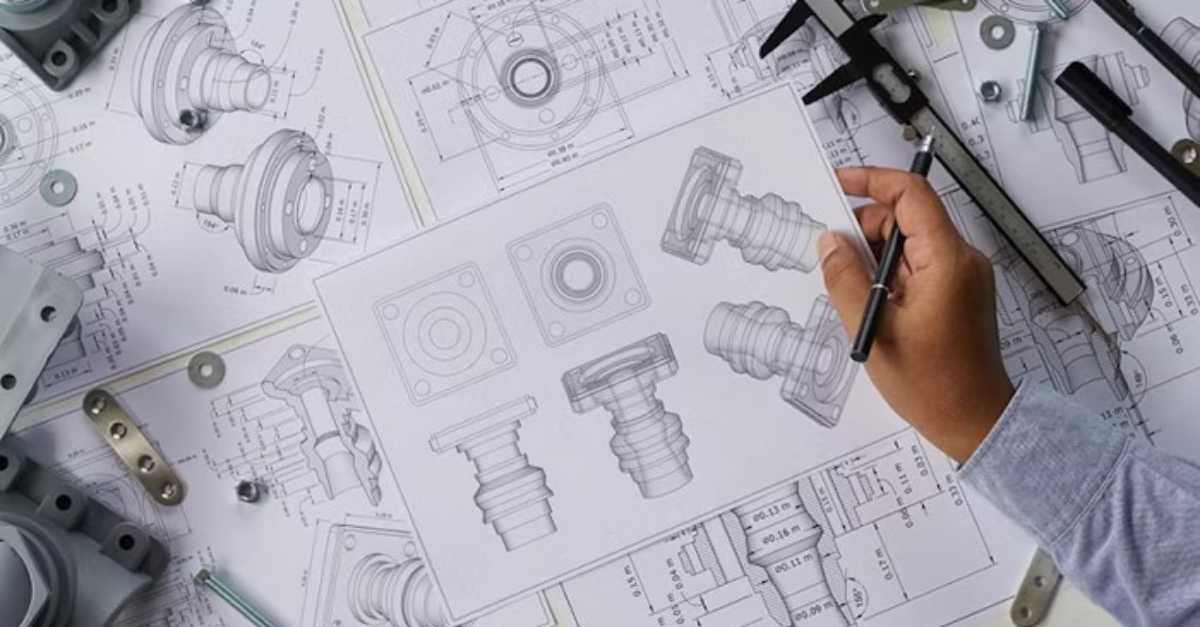
Increase Operational Efficiency by Managing your Engineering Information
With the right EIM software, organizations can save time and gain efficiencies resulting in significant value for both the engineering organization ...
Solutions
Workplace Management Solutions
Real Estate Management Solutions
Maintenance Management Solutions
Energy Management Solutions
Engineering Document Management Solutions
Asset Management Solutions
Automate campus scheduling for classes, meetings, and exams with our EMS software.
Plan and manage conferences effortlessly with EMS software to impress guests and streamline operations.
Boost workplace flexibility and maximize space use with seamless desk and room booking.
Organize workplace or campus events smoothly, creating memorable experiences.
Optimize workspace, manage allocations efficiently, and reduce costs with our space management solutions.
Deliver projects on time and within budget by improving communication, collaboration, and efficiency with our software.
Streamline lease accounting for ASC 842, IFRS, and GASB compliance.
Manage leases efficiently by tracking key dates, analyzing costs, and ensuring compliance.
Centralize data and analytics for better insights, faster negotiations, and revenue growth.
Centralize facility and asset maintenance, automate work orders, and ensure compliance with our CMMS software.
Extend asset life, reduce downtime, and prevent costly repairs with data-driven monitoring.
Prevent equipment failures and extend asset life by detecting and addressing issues early.
Make sustainable, cost-efficient energy decisions by monitoring and optimizing power consumption.
Remotely monitor and control equipment with real-time data to predict issues, boost efficiency, and reduce downtime.
Easily share and collaborate on documents, creating a single source of truth for engineers and contractors.
Manage and analyze assets across their lifecycle to schedule maintenance, reduce downtime, and extend lifespan.
Improve visibility, automate work orders, and ensure compliance for efficient facility and asset management.
Resources
Browse our full library of resources all in one place, including webinars, whitepapers, podcast episodes, and more.
Support
Looking for access to technical support, best practices, helpful videos, or training tools? You’ve come to the right place.
About Accruent
Get the latest information on Accruent, our solutions, events, and the company at large.

Read our 2025 EIM software guide to learn how an engineering information management (EIM) system can improve operations at your organization.
Table of contents
The ever-changing landscape in the engineering information world makes it difficult to know which software and systems will meet your unique needs.
Oftentimes, engineering departments are left scrambling to piece together information at the last minute to maintain compliance or to simply justify the value of what their team brings to the table. The stress and inherent inaccuracies of these situations can be avoided, though, with a well-designed and properly implemented EIM system.
An engineering information management (EIM) system is a platform that helps businesses organize, store, retrieve, and manage engineering-related information, documents, and data. It is a crucial tool for engineering firms, construction companies, and manufacturers.
But where do you start when it comes to finding the right EIM software for your business? This guide covers the benefits of an EIM software, including:
We’ll also offer tips and resources on what to look for in an EIM system to ensure your software meets the unique needs of your business. Let’s dive in.
When managing a global portfolio of projects, accurate information is crucial. Oftentimes, several organizations are managing projects in disparate systems and are therefore communicating in silos. Internal and external stakeholders need to sort through endless amounts of paperwork and data to find information needed to complete a project, which wastes time and resources. Even within an organization, communication breakdowns can result in data inaccuracies or team members working from old documents.
With an automated EIM system, however, this is no longer the case. Using a cloud-based collaborative tool, global project stakeholders can facilitate an efficient and controlled engineering document exchange. An EIM system provides a single source of truth to ensure everyone is working from the same document version. And deliverables and due dates can be properly tracked to maintain control of their document flow throughout the project.
Organizations can also reduce the workload of document controllers with an automated distribution process based on a distribution matrix. This increases efficiency and ensures great data quality because nothing is overlooked, lost, or exchanged incorrectly. Furthermore, the review process becomes greatly improved with these features:
Good EIM software will be designed for quick adoption and usage and should include built-in features like:
According to the IDC, a typical enterprise with 1,000+ knowledge workers wastes anywhere from $2.5 million to $3.5 million per year searching for nonexistent information, failing to find existing information, or recreating information that cannot be found. These issues typically stem from an organization’s inability to manage and access engineering information with properly configured EIM software.
Organizations must be able to access their mission critical engineering information anytime, anywhere, and without delay. This level of shareability in data management requires an EIM strategy that goes beyond what most engineering teams can produce on their own. By centralizing engineering information into EIM software, businesses can reduce operational costs and:

A lack of accurate engineering information can lead to operations and maintenance staff being at risk of getting hurt. The primary danger lies in there being multiple, outdated versions of documents stored in several different places, and the lack of a quick, secure way to access the right documentation. Issues like these can affect the overall safety of employees on-site and decrease staff productivity. Inaccurate engineering documentation may result in:
To ensure a safer, secure workplace, consider implementing a software solution for EIM that ensures employees always have the most up-to-date information. The best engineering info management software provides the ability to:
There is a growing desire among industry leaders to utilize mobile applications to boost the safety of employees and increase efficiency in product development. Although the interest is rising, 61% of workers say that if their organization is not deploying enterprise mobile apps, then it is at a competitive disadvantage. These apps can help employees perform their jobs more quickly and effectively on a daily basis. Common problems engineers face in the field without access to mobile devices include:

When looking for EIM software, be sure to consider products with mobile apps to support engineers and technicians in the field.
It is mission critical for organizations to maintain a complete audit trail for engineering documents throughout its lifecycle. While organizations understand that complying with industry standards for asset information is important and required, the process can prove to be time-consuming and expensive. Some key problems include the following:
To ensure a safer, secure workplace, consider implementing a software solution for engineering information management that ensures employees always have the most up-to-date information. Software for managing compliance with engineering documentation should always include:
Staying compliant with OSHA regulation 29 CFR 1910.119 “Process Safety Management of Highly Hazardous Chemicals” is a struggle for many organizations. Companies require significant effort from their internal resources that tend to be scarce, affecting the control of their hazardous area classification (HAC). Companies are also required to implement a five-year review cycle, placing a burden on the engineering team, and hindering the ability to improve the plant. With a flexible software system designed to improve your documentation both in scale and quality, your engineering team will be more prepared and proactive for compliance and reviews.

The documents that describe these key factors are usually mandatory deliverables in an engineering project. These factors are derived from engineering documents assigned to the change project, such as piping and instrumentation design, material safety data sheets, equipment data sheets, etc. If one of these deliverables changes in the project, the assessment factors may change. By defining documents that describe the assessment factors as project deliverables, workflows are triggered to update and review them. This process ensures that the review and update of HAC deliverables can occur as needed. Depending on the nature of the change, the involvement of specialists is targeted to cases where they are needed. Upon completion, organizations rely on up-to-date HAC deliverables which provides the foundation needed for HAC compliance.
Meridian helps over 350,000 maintenance, operations, and engineering professionals keep their asset documentation up to date. It helps organizations ensure data is easily accessible by the right people while maximizing staff productivity and supporting personnel safety.
Explore Meridian, Accruent’s EIM and engineering document management system today to see how it can transform your operations.

With the right EIM software, organizations can save time and gain efficiencies resulting in significant value for both the engineering organization ...
Explore the capabilities of the Infrastructure Lifecycle Management System and learn how it can help your organization with efficiency and cost.
By design, Meridian is an engineering document management system (EDMS). But once in use by Engineering, the tool can be extended to support more ...
Subscribe to stay up to date with our latest news, resources and best practices